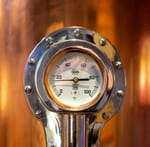Nikolai Kulemin scored 30 goals for the Toronto Maple Leafs last season, a figure that was good enough for twenty-ninth in the NHL. The young Russian was even better at even strength, finishing twelfth in the NHL with 24 5v5 goals. It should go without saying that those are excellent numbers, especially for a twenty-four year old in only his third NHL season. Kulemin's 2010-2011 season was fantastic. He's going to be a very good hockey player for years to come. And it's incredibly unlikely that he'll repeat last season's statistical performance.
Some of you already know why Kulemin is facing an uphill battle. For those who don't, it all comes back to last season's shooting percentage (the percentage of shots taken which result in goals). This statistic is not what the hockey community would consider an "advanced stat". Every major website, including NHL.com, keeps track of this figure for each player (referred to as "SH%" from here on). So if you're reading this and thinking to yourself "this is why I hate advanced stats", then you really have no clue as to what you're talking about.
Continued after the jump...
Kulemin's numbers were great last season. His SH% was 17.3% in all, including an incredible 17.8% at even strength. Among players who scored at least 20 5v5 goals last year (thirty-three players qualify), Kulemin had the fourth best SH%. In fact, only eight players in the league had at least 20 5v5 goals and a SH% of 15%. These types of performances are what I would label a "super efficient" season from a player.
But how would Kulemin's season compare to other performances over the past four NHL seasons? To find out, Gabe Desjardins' wonderful Behind the Net site was used to create a list of comparable seasons. The only restrictions were that players had to have scored at least 20 5v5 goals, played in at least 40 games, and scored on at least 15% of their shots. Using these conditions, the following player performances came up:
|
As you can see, there's only thirty-one different names over four NHL seasons. Only five of those names are repeated. This suggests that it's incredibly difficult to follow up one of these "super efficient" seasons with another. As it turns out, it's damn near impossible. Here's a table showing the following season for every one of these players from 2007-08 to 2009-10 (obviously this cannot be done for the most recent group of players):
|
Ouch. Only three players were able to produce back to back results. The 20 goal plateau was only reached seven times. Follow-up seasons average seven less 5v5 goals, eight more saved shots, and a 34% decrease in SH%. Applying these numbers to Nik Kulemin's 2010-2011 season doesn't paint a wondrous picture for the fall. Kulemin's projected numbers, based upon comparable players from 2007 to 2010, yield a significant drop from 2010-2011: 17 G, 119 saved shots, and 11.8 SH%. When you consider he's likely to score an addition 6-8 times on special teams, the Leafs will still have a solid, young 25 goal scorer. But his numbers last season were not solely a result of Nik Kulemin becoming a better hockey player. There was a significant amount of luck involved in his scoring success rate, a trend that's not likely to continue when you consider the historical comparisons.
Let's be clear: these numbers are not binding. It is possible to repeat a "super efficient" performance. I doubt there's a Leaf fan reading this story who doesn't hope Kulemin pots 30 again. Just remember that when someone talks about expected regression from Kulemin, they're not saying he's going to become a worse hockey player. They're saying that his numbers were so special last season that it's going be extremely tough to reproduce them.




Comment Markdown
Inline Styles
Bold: **Text**
Italics: *Text*
Both: ***Text***
Strikethrough: ~~Text~~
Code: `Text` used as sarcasm font at PPP
Spoiler: !!Text!!